How to Start a T-Shirt Business That Makes Money in 2025: The Definitive E-commerce Guide
The E-commerce Roadmap: From Idea to Profit
Starting a t-shirt business is an exciting and potentially lucrative business idea for many entrepreneurs in 2025. Whether you want to launch an **online t-shirt business** or scale into a full clothing line, learning how to start a t-shirt business properly can set you on the path to becoming your own boss and building a successful t-shirt brand. This comprehensive guide covers everything from market research and design creation to marketing strategies and order management, helping you build a thriving shirt business with low startup costs and strong profit margins.
The global custom t-shirt printing market was worth about **$5.16 billion in 2024** and is expected to grow by 11.5% annually from 2025 to 2030, highlighting the immense potential of this industry. Many entrepreneurs are drawn to the shirt business because of its accessibility and potential for passive income.
Key Takeaways
- The t-shirt business offers **low upfront costs** and high scalability, making it ideal for new entrepreneurs.
- Choosing a specific niche and **target audience** is crucial for standing out in a competitive market.
- **Print on demand services (POD)** allow you to start selling t-shirts online without inventory upfront.
- Creating unique t-shirt designs and using quality printing techniques build your brand’s reputation.
- Marketing efforts like **social media marketing**, email campaigns, and paid ads drive traffic to your online store.
- An effective business plan with clear financial projections and sales channels helps ensure long-term success.
Phase 1: The Foundational Strategy
This phase ensures your business is built on a solid, competitive foundation, preventing common pitfalls that sink new clothing brands.
1. Do Market Research: Finding the White Space
Before launching your t-shirt brand, conduct thorough **market research** to understand your potential customers and competitors. Identify trends in t-shirt designs, popular niches, and pricing strategies. Research which brands are popular in your niche and consider how understanding established brands can inform your own strategy. Analyze your target market’s preferences to tailor your products effectively. Market research helps you avoid costly mistakes and positions your business for success.
Long-Tail Keyword Opportunity: Start with a **unique graphic tee for band lover** concept or designs targeting specific hobbies and communities.
2. Choose a Niche: Specialization is Power
Focusing on a specific niche allows you to create targeted marketing strategies and build a loyal customer base. Consider niches such as **eco-friendly shirts**, sports-themed tees, gamer apparel, or **custom t-shirt designs for events**. A clear niche differentiates your t-shirt business and makes it easier to connect with your target audience. Instead of selling general merchandise, become the go-to source for something hyper-specific, like **streetwear urban graphic t-shirt** designs.
3. Write a Business Plan: Your Blueprint for Profit
A detailed **business plan** outlines your goals, strategies, and financial projections. Business plans are essential tools for establishing and growing a t-shirt business, helping to secure funding and define strategic goals. Include your business name, brand identity, target market, **marketing strategy**, sales channels, and budget for upfront costs. Incorporate tax considerations like sales tax and potential tax benefits. Registering your t-shirt business as a sole proprietorship or LLC can offer legal protections and tax benefits. A solid business plan guides your actions and attracts potential investors or partners.
Phase 2: Design and Production Logistics
This phase translates your brand vision into a physical, sellable product while establishing the most efficient logistics.
4. Partner with a POD Company or Manufacturer
Using a **print on demand (POD) service** is an affordable option to start selling t-shirts online without holding inventory upfront. POD companies handle printing, packaging, and shipping, allowing you to focus on design and marketing. This reduces production time and initial investment, making it ideal for a side hustle or home-based business.
Alternatively, if you are looking for premium quality, low minimum order quantities (MOQs), and more control over fabric and fit—especially for **athleisure basics**—you will need a specialized manufacturer. For a deeper dive into this professional pathway, refer to our guide on manufacturing basics: The Ultimate Guide to Custom T-Shirt Manufacturing (Concept to Quality Control).
5. Pick a T-Shirt Style and Fabric
Selecting the right t-shirt styles is essential for customer satisfaction. You need to decide on the blank canvas. Will you prioritize comfort with a **softstyle T-Shirt**, or focus on durability with a **heavy cotton tee**? Choosing quality shirts enhances the overall appeal of your products and supports your brand’s reputation. Consider niche fits, such as the trendy **oversized t-shirt** fit, which is highly searched.
Long-Tail Keyword Opportunity: Focus on selling **ethically sourced sustainable t-shirt** options to tap into the high-value conscious consumer market.
6. Create Your Own T-Shirt Designs
Unique designs are the heart of a successful t-shirt business. Develop your own artwork or collaborate with graphic designers to produce original and eye-catching **t-shirt design ideas**. Stay updated on trends but strive for originality to build a strong t-shirt brand. Whether you create **custom t-shirt designs** or use pre-made designs as inspiration, quality and uniqueness attract customers. Consider long-tail design concepts like **minimalist line art t-shirt**.
Phase 3: Launch and Growth (E-commerce & Marketing)
Once you have your product and production path defined, the focus shifts to sales and scalability.
7. Create an Online Store and Optimize SEO
Set up an **ecommerce store** using platforms like Shopify or Etsy to start selling t-shirts online. Choosing the right ecommerce platform is crucial for effectively launching and managing your online t-shirt business. These platforms provide tools for product pages, order management, and payment processing. Running an online store provides a central hub for your products, promotions, and customer interactions. Make sure your online store is user-friendly, mobile-optimized, and showcases your designs effectively.
8. Set Prices and Manage Financials
Pricing your t-shirts correctly balances competitive positioning with **profit margins**. Consider your upfront costs, production expenses, and market rates. Factor in sales tax and shipping fees. Offering occasional discounts or bundle deals can incentivize customers without sacrificing profitability. A profit margin of **10–50%** is typically aimed for in t-shirt businesses to ensure profitability.
9. Promote Your Products with Intent
Marketing is vital to drive traffic and sales. Use a mix of **social media marketing**, email marketing, and paid ads to reach your target audience. Share engaging content on Instagram, Facebook, and TikTok showcasing your t-shirt designs and brand story. Collaborate with influencers and run promotions to boost visibility. Consistent marketing efforts help build your brand’s reputation and attract happy customers. Consider the long-tail search for **unique personalised gift t-shirt** ideas when planning holiday promotions.
10. Analyze Your Performance and Scale
Regularly review your sales data, website traffic, and customer feedback. Track how many t-shirts have been sold to measure demand and identify which designs are most successful. Use analytics tools to understand what works and where to improve. Adjust your marketing strategy and product offerings based on performance insights to grow your **ecommerce business** sustainably.
Building a Strong Brand Identity and Authority
Building a strong brand identity is the foundation of any successful t-shirt business. Your brand identity is more than just a logo—it’s the personality and values that set your t-shirt company apart in a crowded market. Start by defining your brand’s mission, vision, and core values. What does your shirt business stand for, and what message do you want to communicate to potential customers?
For guidance on scaling your vision beyond POD, refer to our comprehensive guide on **developing a premium clothing line**: How to Build a Fashion Brand in 2025.
Unique Value Proposition and Long-Term Success
A **unique value proposition (UVP)** is what makes your t-shirt business stand out from the competition. It’s a clear statement that explains why customers should choose your t-shirt store over others. To craft a compelling UVP, start by identifying what makes your products and services special. Do you offer exclusive **t-shirt design ideas**, use premium materials, or provide exceptional customer service? Use keywords like “t-shirt design ideas” and “print on demand service” to help your UVP rank in search engines and attract potential customers searching for unique designs.
Final Thoughts – Start Selling Custom T-Shirts Today
Learning how to start a t-shirt business is a rewarding journey that combines creativity with entrepreneurship. By conducting market research, choosing the right niche, creating unique designs, and leveraging print on demand services, you can launch a profitable **online t-shirt store** with minimal risk. Focus on building your brand’s reputation through quality printing and effective marketing strategies. Selecting the appropriate printing technique is essential for ensuring high-quality results and maintaining your brand's reputation. Start selling t-shirts today and take the first step toward a successful and fulfilling business venture.
Frequently Asked Questions (FAQ)
- Q1: What are the biggest differences between Print on Demand (POD) and a manufacturer like Athleisure Basics?
- A: POD is ideal for low-cost, low-risk startups focusing on fast graphic designs, as it handles fulfillment. A manufacturer like Athleisure Basics is better for brands prioritizing premium quality, custom cuts, proprietary fabrics (like moisture-wicking materials for **athletic wear**), and a consistent, high-end brand experience that POD often cannot deliver.
- Q2: Should I focus on organic cotton or standard materials?
- A: Focusing on **organic cotton graphic t-shirts** can significantly boost your appeal to the growing number of ethically conscious consumers. While it may increase your unit cost, it provides a strong unique value proposition and opens up keywords like **ethically sourced sustainable t-shirt** for better SEO ranking.
- Q3: How important is my brand identity in a crowded market?
- A: Your brand identity—logo, voice, values, and UVP—is critically important. It's how you move beyond selling generic "t-shirts" to selling a distinct "brand experience" that fosters customer loyalty and enables you to command higher prices.
- Q4: Can I successfully transition from POD to manufacturing later?
- A: Yes. Many successful brands use POD to test designs and validate niches initially. Once sales volume and customer feedback justify the investment, they transition to professional **custom apparel manufacturing** for better margins, superior quality, and greater product control.
- Q5: What initial budget is needed to launch an online t-shirt business?
- A: A POD business can launch with as little as $100–$500 for a website subscription, sample shirts, and initial marketing spend. A custom manufacturing approach with low MOQs will require a higher initial investment for sampling and bulk inventory, typically ranging from $1,500 to $5,000 depending on the complexity.
- Q6: What is a key marketing tip for social media success?
- A: Focus on building a community around your **niche and design ideas**, not just pushing products. Run user-generated content campaigns and target long-tail keywords like **funny birthday slogan tee for him** in your ad copy to attract highly specific buyer intent.

As Custom Clothing Expert Alicia Pereira advises, a successful launch depends on strategic groundwork. With her 15 years of experience in the Portuguese textile manufacturing community, she notes: "Leveraging my experience in the Portuguese textile market, I've seen that the brands who succeed globally, even with low MOQs, are those who prioritize premium fabric quality and flawless execution, not just low prices. The quality of your blank is your brand's foundation."
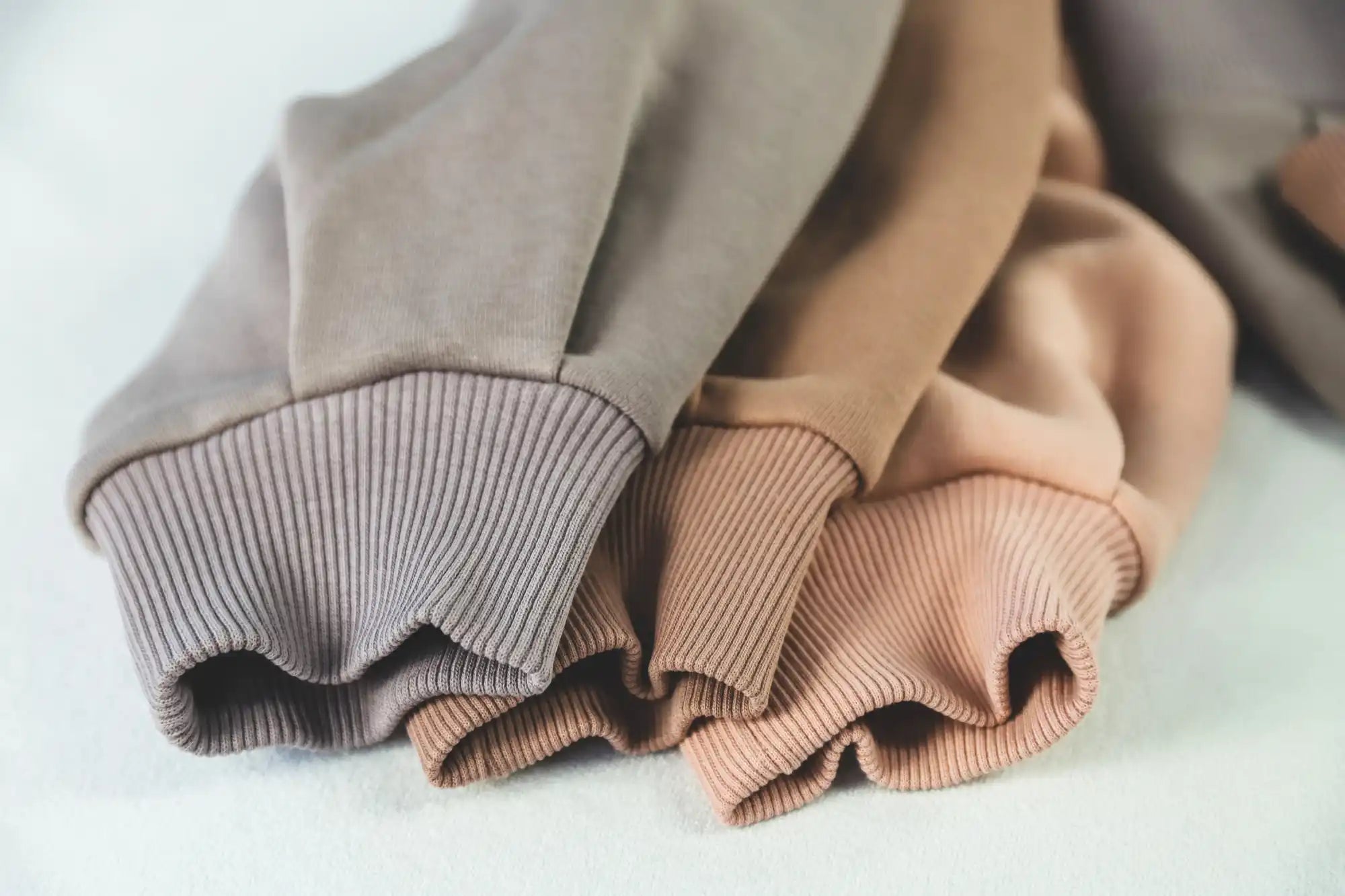
Materials & Fabrics for Clothing Production
Explore cotton, French terry, jersey, fleece, and sustainable blends used in premium apparel manufacturing.
Explore Premium Apparel Fabrics Guide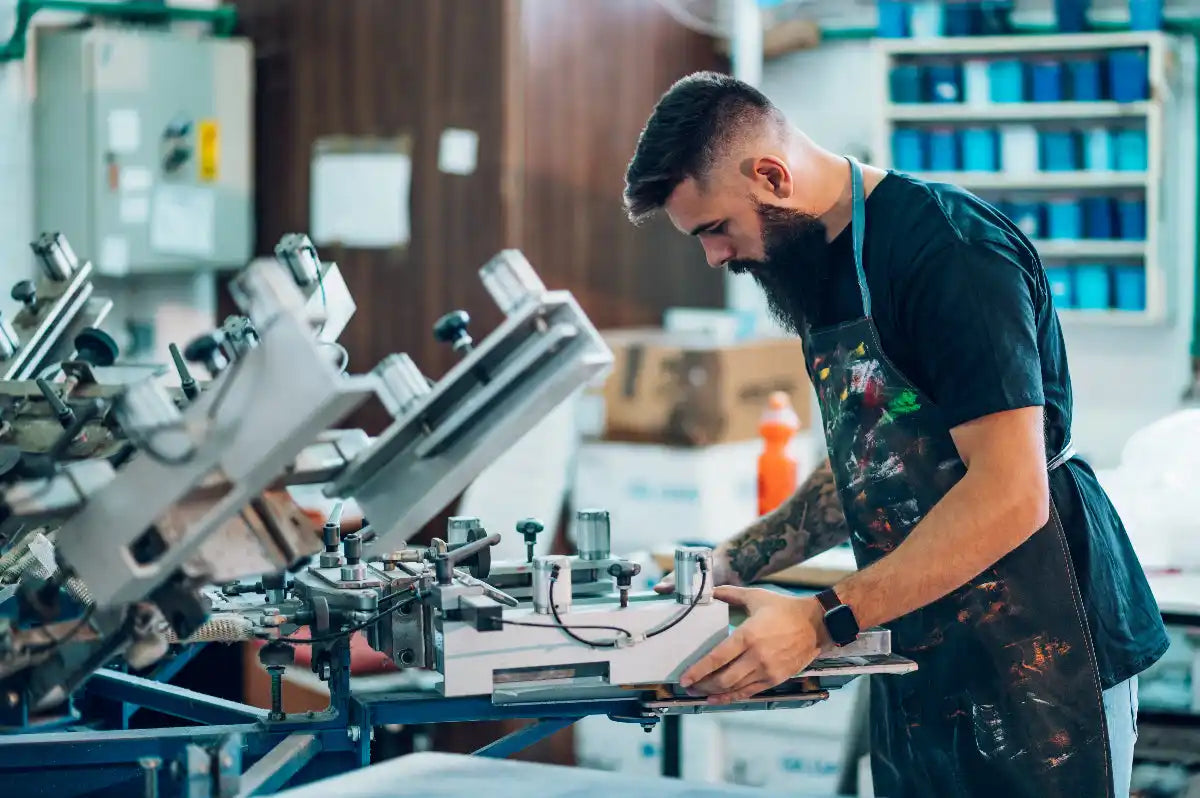
Printing Techniques for Apparel Production
Screen printing, embroidery, puff prints, and digital methods for custom clothing manufacturing.
Explore Custom Apparel Printing Techniques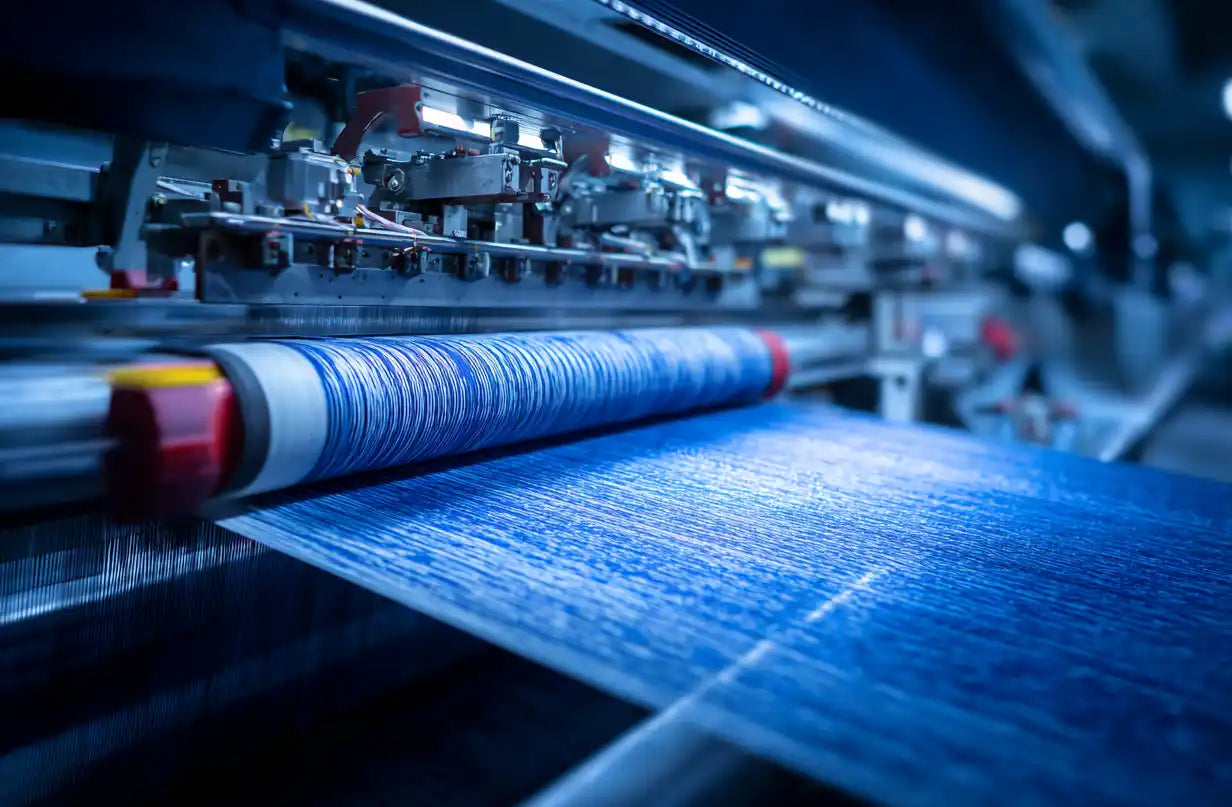
Dyeing Techniques in Clothing Manufacturing
Garment dye, pigment, acid wash, and stone wash finishes that create unique apparel designs.
Compare Apparel Finishing Techniques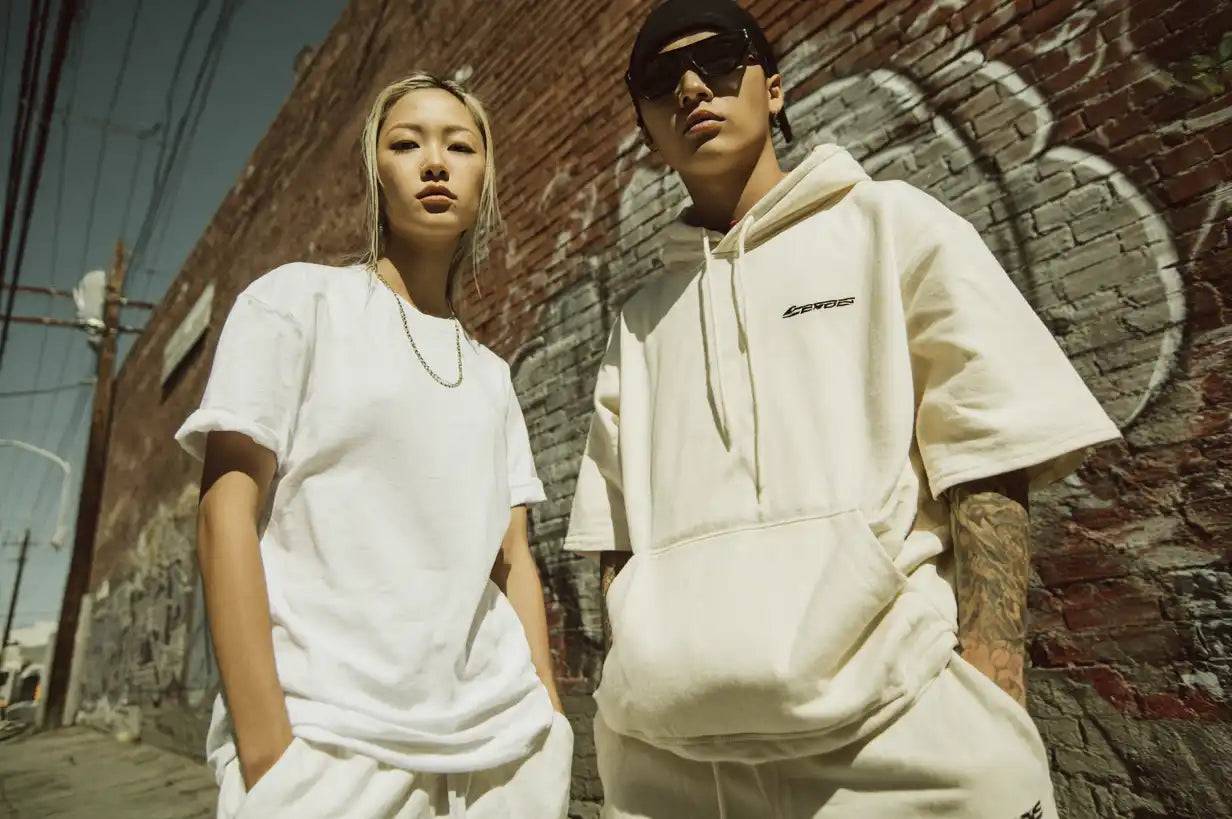
Popular Clothing Items for Custom Apparel
Hoodies, joggers, t-shirts, leggings, and biker shorts — essentials for every apparel collection.
Explore Popular Custom Clothing Items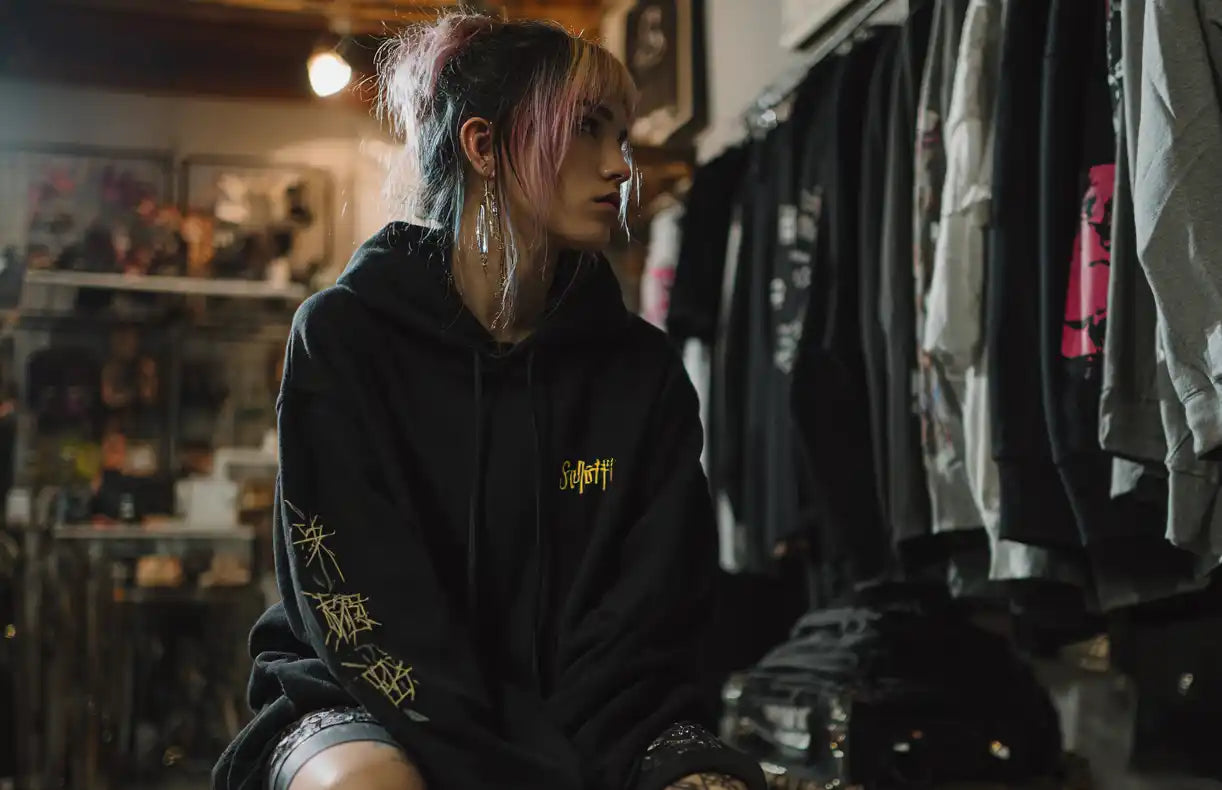
Trends & Designs in Modern Apparel
Oversized fits, streetwear influences, and activewear styles driving custom clothing production.
Explore Trends & Designs for Apparel Development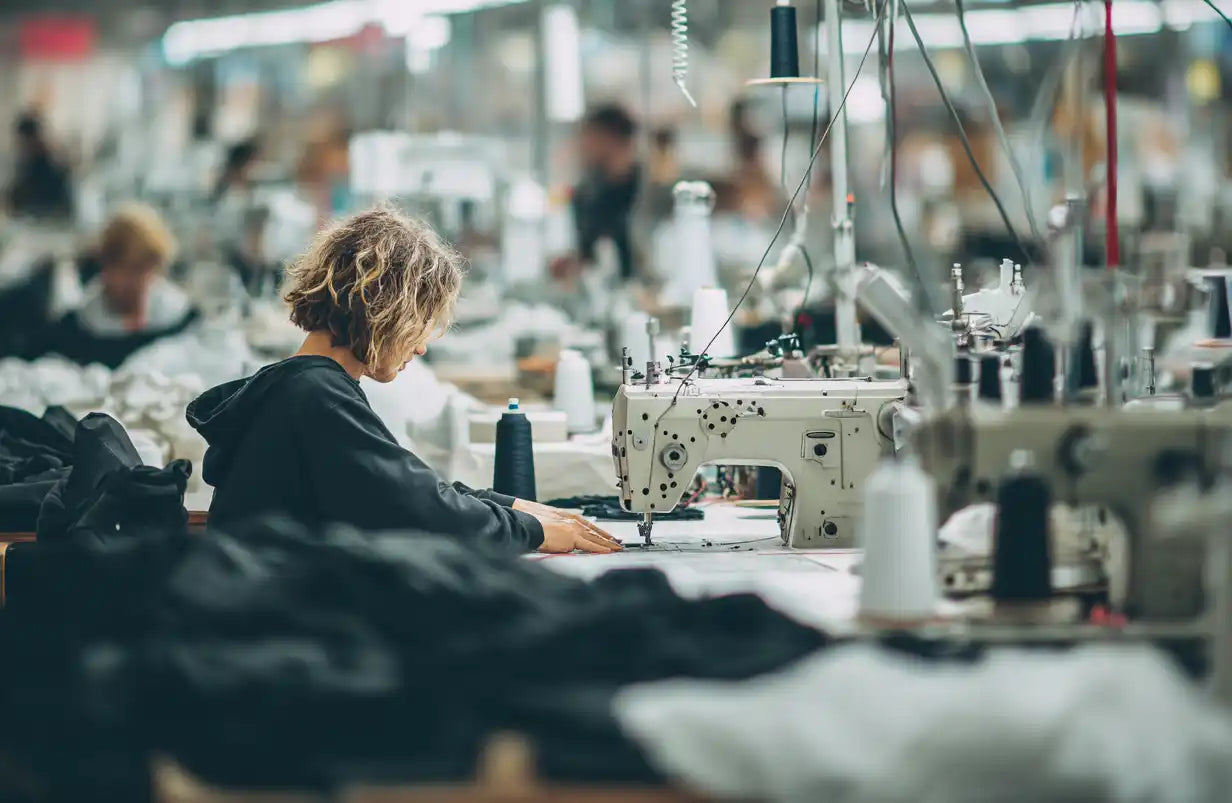
Sustainable & Ethical Clothing Production
OEKO-TEX® certified fabrics, organic cotton, and ethical apparel manufacturing in Portugal.
Understand Sustainable & Ethical Clothing Production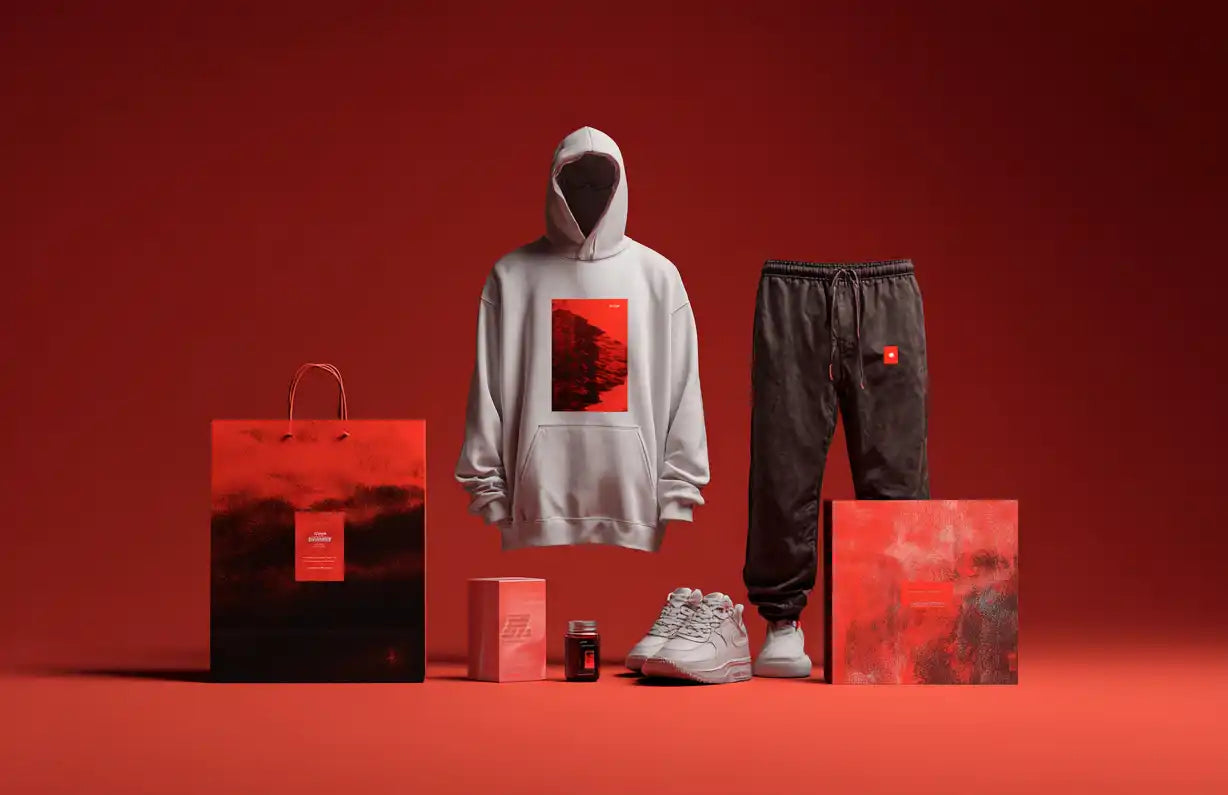
Essentials for Custom Clothing Production
Custom labels, packaging, and trims that elevate your apparel brand in production.
Explore Essentials for Custom Clothing Production
Resources for Custom Clothing Production
Startup guides, logistics support, and scaling strategies for apparel brands and wholesale clients.
Explore Resources for Custom Clothing Production
Clothing Manufacturing Glossary
Explore a complete glossary of clothing and garment manufacturing terms
The Complete Clothing Manufacturing Glossary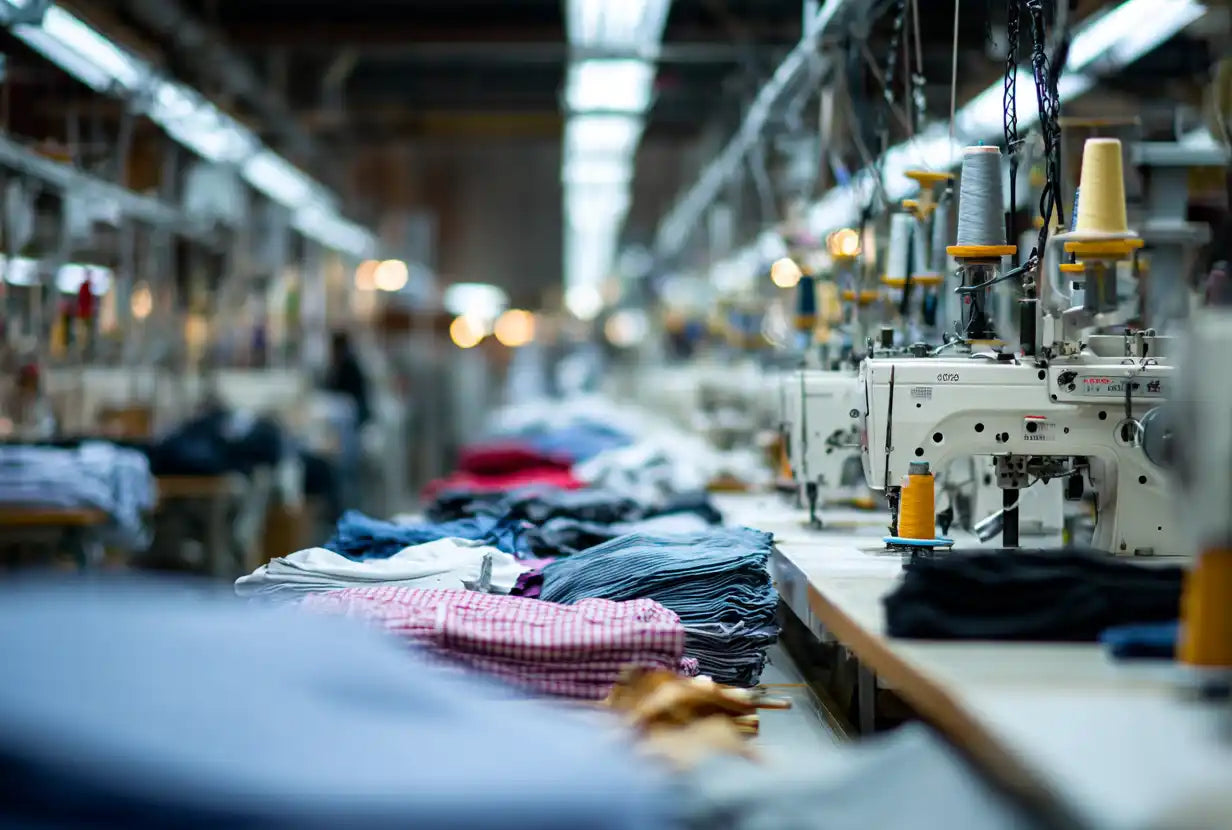
The Best Clothing Manufacturers
Explore global clothing manufacturers by country
Explore The Best Clothing Manufacturers
The Latest Clothing Industry Updates in 2025
Discover the latest news about important topics in the clothing industry in 2025,
Stay On Top Of Clothing Industry Updates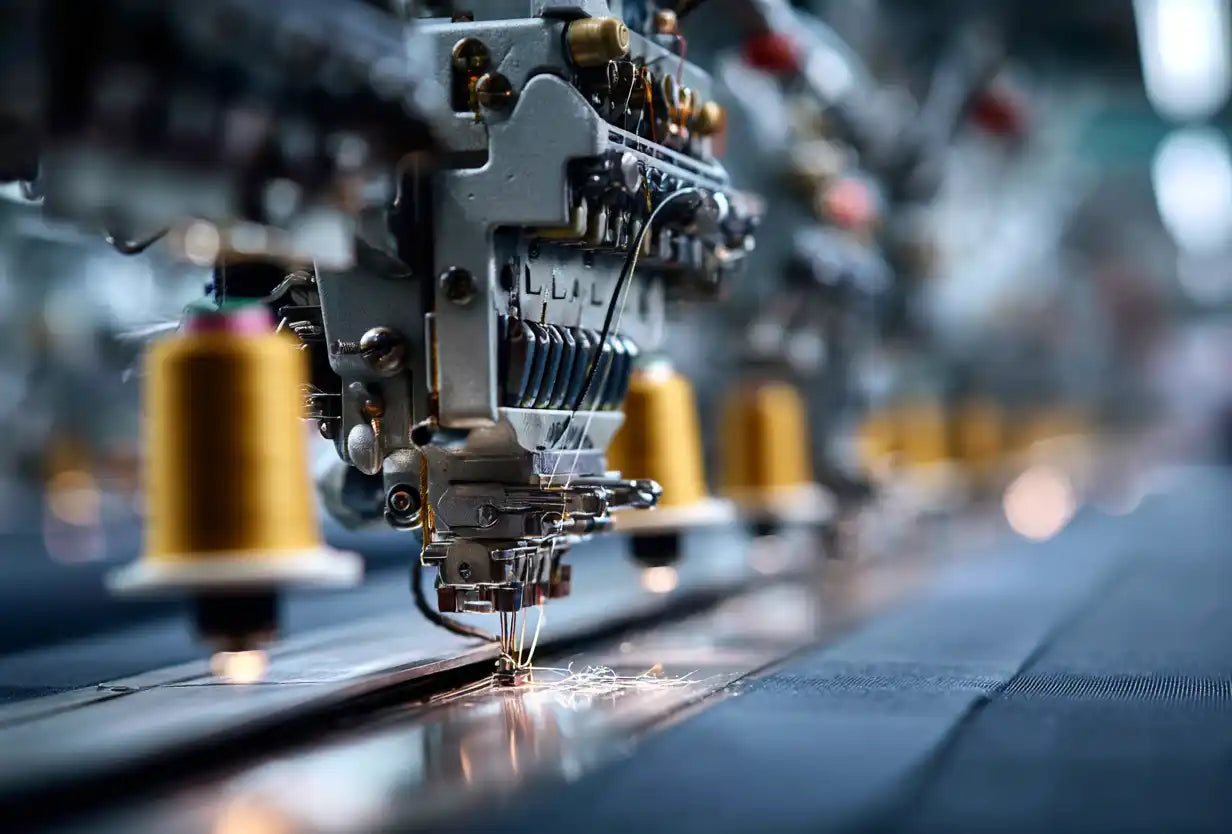
Worldwide Best Manufacturers of Clothes in 2026
Top clothing manufacturers worldwide organized by product type
Find The Worldwide Best Manufacturers of Clothes